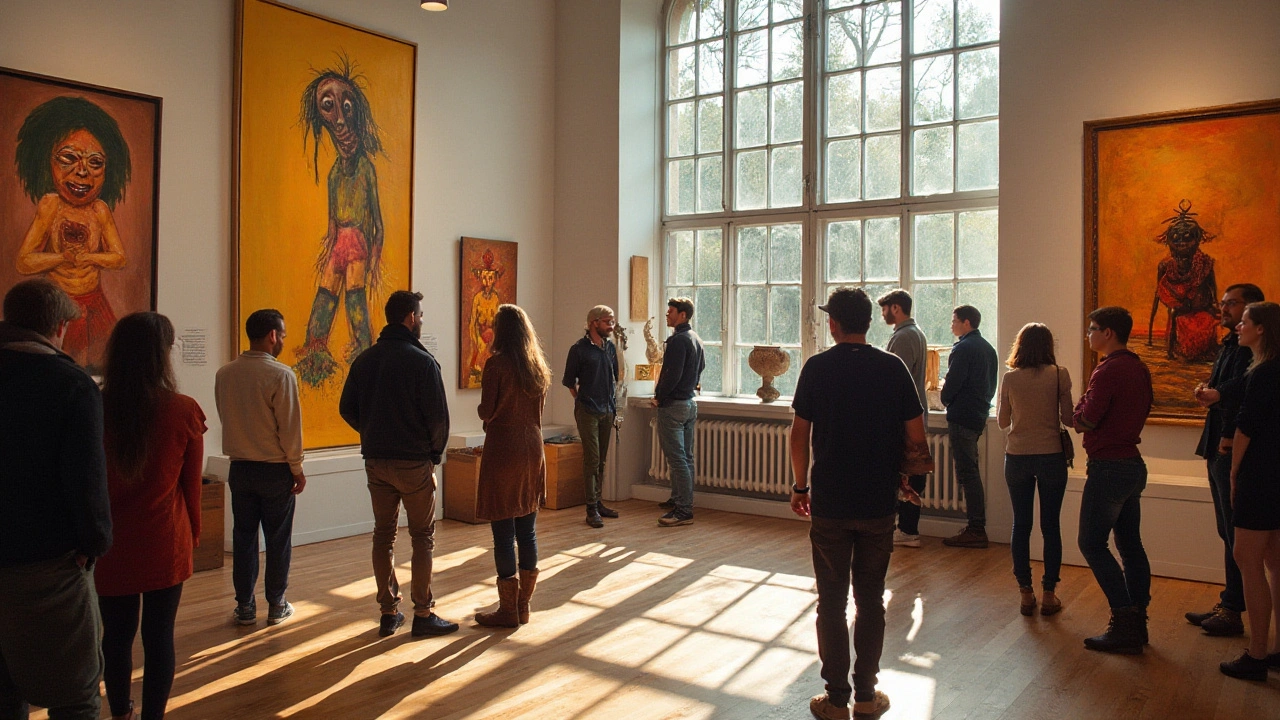Bold Art: How to Use Color, Scale and Shape to Make Work Pop
Want art that stops people in their tracks? Bold art does that by relying on big choices: loud color, clear shapes, unexpected scale, and confident marks. This page explains what makes art feel bold and gives simple ways to add that energy to your space or portfolio.
Bold art isn’t one style. It shows up in Abstract Expressionism’s raw brushwork, Bauhaus’s strong geometry, neon installation pieces, and even photorealism when the subject or contrast is pushed to an extreme. The common thread is clarity of intent—nothing tentative, everything deliberate.
How to make a piece read as bold
Color contrast: Use high-contrast palettes—think cyan against orange or black against white. A single saturated hue next to muted tones makes the saturated color feel powerful. Try one accent color in a room and let the artwork carry it through.
Scale and placement: Big = bold. Oversized canvases, large sculptures, or wall-covering installations force attention. If you can’t go large, hang a mid-size piece at eye level on an uncluttered wall so it becomes the room’s focal point.
Clear shapes and edges: Strong silhouettes read from a distance. Simplify shapes, harden edges, and reduce visual clutter so the idea is readable at a glance. This works for graphic De Stijl-style layouts or gestural expressionist works alike.
Texture and material: Rough brushstrokes, thick impasto, glossy lacquer, or raw metal can all shout. Mix materials—fabric, paint, found objects—to create contrast that engages both sight and touch.
Where to use bold art and how to live with it
Home: Put bold art in entryways, above sofas, or over mantels. Keep nearby decor neutral and let the artwork set the tone. A bold print can update a plain room faster than repainting or buying new furniture.
Public and workspaces: Large, bold pieces help orient people in lobbies and plazas. Land art and installations often use bold forms to reshape how a space feels—think simple shapes repeated across a park or a vivid mural on a blank building wall.
Mixing styles: Pair a bold modern piece with a subtle classic frame or place a bright abstract next to a smaller, detailed work. Contrast makes both pieces stronger when done with intent. If in doubt, match one main color between works to create visual harmony.
Practical tips: Test a print taped to the wall to check scale. Use adjustable lighting to boost color and shadow. If you buy art online, crop a phone photo of your wall and paste an image of the artwork to preview how bold it will feel in the room.
Want examples? Check works that push limits: photorealism with extreme contrast, Abstract Expressionist canvases that celebrate gesture, Bauhaus pieces that use big shapes, and installation art that changes how you move through space. Each shows a different way to be bold—pick the approach that fits your taste and your space.
Bold art is a choice. Make clear, confident ones about color, size, and material, and you’ll get work that demands attention—and keeps it.

